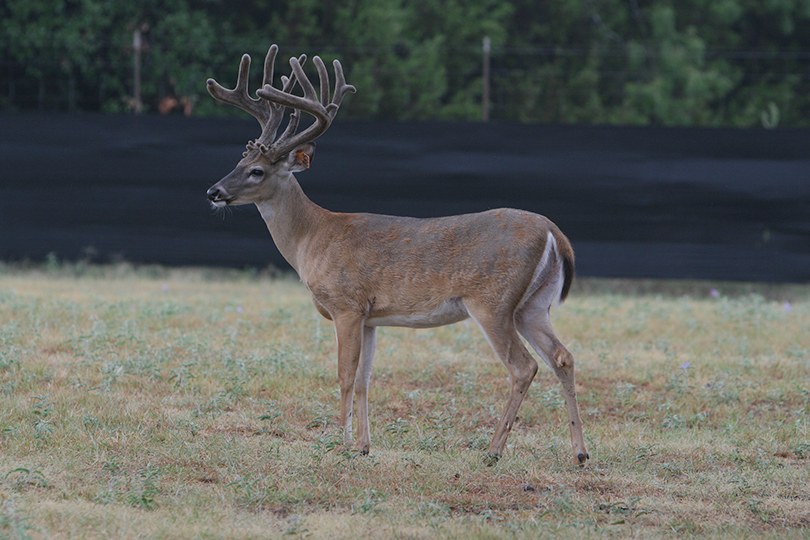By Jennifer Whitlock
Field Editor
After the recent discovery of chronic wasting disease (CWD) in six deer-breeding facilities in Texas, an emergency rule was implemented on June 22 by the Texas Parks and Wildlife Department (TPWD) to restrict movement of deer from breeding facilities where CWD was previously detected.
Existing rules already prevented the movement of deer from sites directly linked to CWD-positive facilities, but the agency said further measures were necessary due to the immediate danger to the state’s entire white-tailed and mule deer herd, as well as other cervids.
“This is a terribly unfortunate development that we are committed to addressing as proactively, comprehensively and expeditiously as possible. The health of our state’s free-ranging and captive deer herds, as well as affiliated hunting, wildlife and rural-based economies, are vitally important to Texas hunters, communities and landowners,” TPWD Executive Director Carter Smith said in a statement. “As such, our primary objectives are to enhance testing at sites that received deer from affected facilities and avoid the unintentional release of CWD-positive deer. Along with our partners at Texas Animal Health Commission (TAHC), we will continue to exercise great diligence and urgency with this ongoing investigation.”
When CWD was discovered in six deer-breeding facilities earlier this year, TPWD said five of the identified premises had “extensive direct or indirect epidemiological connectivity with each other and/or deer-breeding facilities and locations where breeder deer have been released.”
The five facilities were found to have connections with almost 300 other deer-breeding facilities across more than 90 counties, creating what TPWD called a “significant possibility” additional captive and free-ranging herds were exposed to CWD. It was recognized after two of those facilities likely had CWD present at least a year prior to discovery, causing concerns among stakeholders.
But in the original emergency rule filed in June, TPWD said they later identified a conflict in the definition of “exposed deer” and the definition of a “Tier 1 facility.”
That had the unintended consequence of not including all affected deer and breeding facilities epidemiologically connected to CWD-positive facilities. So, on July 19, the agency introduced a new emergency action to replace the June 22 filing.
Other changes included modifying the definition of “last known exposure,” the authorization of transfer of fawns to a nursing facility from a Trace or Tier 1 facility, clarification on CWD zone rules, and the option for deer breeders to request a customized epidemiological assessment and testing plan for each affected facility.
The rule change ensured every facility that has held or is currently holding an exposed deer that had been in a trace facility is classified as a Tier 1 facility. Now, an additional 28 deer-breeding facilities are subject to the provisions of the latest emergency rule.
“The department strongly believes vigilance is crucial to minimizing the severity of biological and economic impacts that could result from the current situation,” TPWD said. “Therefore, pending resolution of the current epidemiological uncertainty surrounding the spread of CWD from directly connected facilities, the department believes more rigorous testing at certain deer breeder facilities, in conjunction with mandatory testing of breeder deer prior to any release, is a wise and responsible course of action.”
In its filing, TPWD noted the immediate net effect of the updated emergency rule would reduce the number of Tier 1 facilities to 208 from 214. TPWD also said the number of Tier 1 facilities was expected to decline with the implementation of the updated emergency rule.
The original emergency rule expiration date of Oct. 19 still stands. TPWD said staff will present the rules to the Texas Parks and Wildlife Commission at an August commission meeting work session.


If you would of left the deers in their natural habitat and no contact with humans then God creatures would not be sick you think just cause you wear a badge doesn’t mean you have to put the animals in danger they already have enough problems.
Hi. This is an alarming matter. But I think the immediate leadership intervention is phenomenal.
How is CWD spread i.e., direct contact, soil born, insect vectors…?
Money control everything these days. Go back to the old way on deer hunting.
Confining game fences leads to interbreeding and herd decline.
It has become a large problem.
Texas deer belong to all Texans, not just a few wealthy land ownwers.
Best comment ever!
Common sense prevails hopefully and this outbreak is diminished.
Deer that have not been exposed to CWD should be able to be released. T
Dare I say there is not a vaccine for CWD? Seems like it could be treatable with the hazard of other complications.